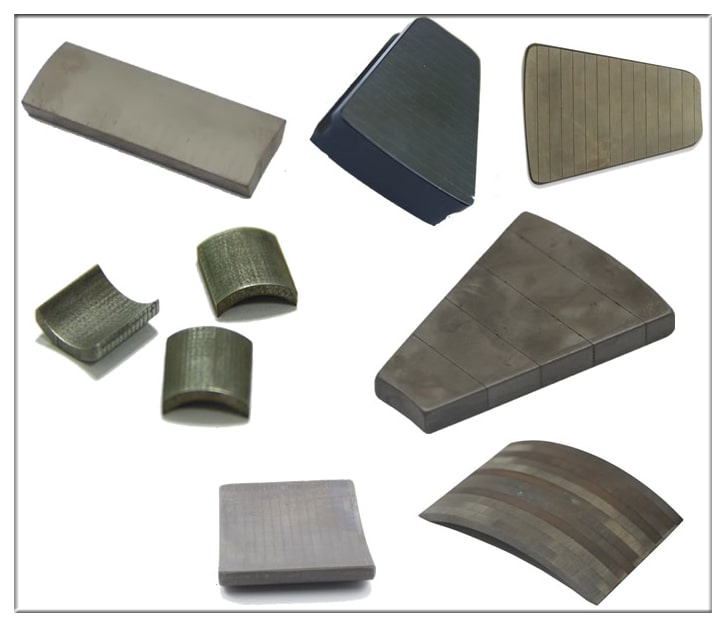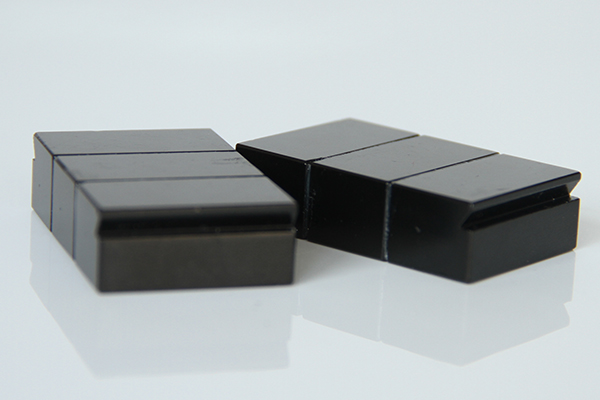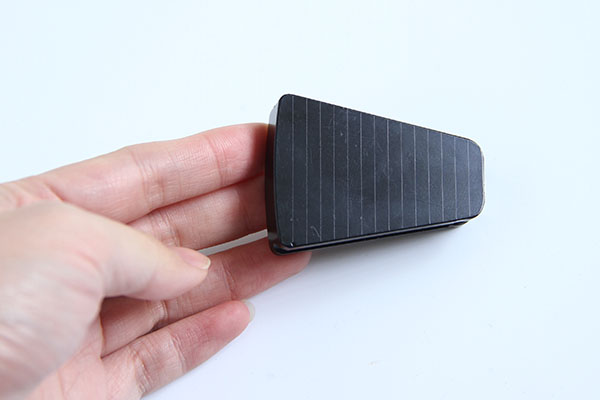Everything You Need to Know About Laminated Magnets
What is a Laminated Magnet?
Laminated permanent magnets are a specially designed magnetic component. It is to cut the whole magnet into many small magnets, and then glue them together with specific glue. These small magnets are insulated from each other to reduce electromagnetic eddy currents. For example, rare earth magnets are bonded to each other or to a steel plate, with the entire stack having the same polarity.

Why Choose Laminated Magnets?
Laminated Magnets Reduce Eddy Current Loss in High-Efficiency Motors. High efficiency demands the best materials, and the Arnold L Type laminated magnets are proven to reduce eddy current losses in high-efficiency motors. Less eddy current loss means less heat and less waste.
What Are the Characteristics of Laminated Magnets?

The consistency of superficial magnetic force is excellent;
The unique production way increases the competitive advantage in production efficiency, manufacturing accuracy, and cost control;
This magnet has excellent resistance to high temperature and humidity the anti-corrosion properties because of using overall plating surface protection technology;
By means of insulated stitching, these small magnets are insulated from each other;
The thickness of the insulating layers is within 0.04mm;
The bond strength of insulating layers can reach more than 50Mpa at room temperature;
The maximum working temperature is up to 200 ℃;
The geometric tolerance for the laminated magnet is within±05mm;
They are available in samarium cobalt and neodymium iron boron materials;
Custom sizes and shapes are acceptable too.
How to Choose the Right Laminated Magnet?
Magnetic strength: Magnetic strength is one of the most important performance indicators of laminated magnets. Choose the appropriate magnetic strength according to your needs.
Magnetic materials: Commonly used magnetic materials include ferrite, samarium cobalt and neodymium iron boron. Different magnetic materials have different properties, so it is necessary to select the appropriate magnetic material according to the needs.
Shape and Size: Laminated magnets can be produced in different shapes and sizes. Choose the right shape and size according to your needs.
Heat resistance: The heat resistance of laminated magnets depends on the heat resistance of the magnetic material. If you need a magnet used in a high temperature environment, you need to choose a magnetic material with good heat resistance.
Price: The price of laminated magnets depends on factors such as magnetic material, shape and size. Choose the right price according to your budget.
How Laminated Magnets are Made?

Laminated magnets are made by bonding two or more magnetic materials together. This method can produce magnets of different strengths, shapes and sizes.
The manufacturing process of laminated magnets is generally divided into the following steps:
Prepare materials
First, you need to prepare the required magnetic materials. Commonly used magnetic materials include ferrite, samarium cobalt, neodymium iron boron and so on. The magnetic properties of these materials are different, so the appropriate material can be selected according to the needs.
cutting material
Cut the prepared material into the desired shape and size. The thickness of the cut is usually 0.1-0.2 mm.
Adhesive material
The cut materials are stacked together and glued together. The adhesive is usually epoxy or phenolic.
suppress
Put the bonded material into the press and press it. Pressing allows the materials to be firmly bonded together and enhances magnetic properties.
cutting shape
Cut the pressed material into final shape.
Laminated Magnets vs. Traditional Magnets
Main Applications of Laminated Magnets
Now aerospace, automotive, motorsport, and industrial markets are turning to laminated rare earth magnets, and are working to balance the tradeoff between power and heat.
FAQs About Laminated Magnets

Q1: What are the benefits of using laminated magnets?
A: Laminated magnets offer reduced eddy current losses, higher magnetic flux density, improved thermal stability, and reduced magnet volume.
Q2: How are laminated magnets made?
A: Laminated magnets are made by stacking thin layers of magnetic material with insulating layers, then bonding them together using a process such as hot pressing or epoxy bonding.
Q3: What applications are laminated magnets used for?
A: Laminated magnets are used in applications such as electric motors, generators, transformers, and magnetic sensors.
Q4: What types of magnetic materials are used to make laminated magnets?
A: Laminated magnets can be made using a variety of magnetic materials, including neodymium-iron-boron (NdFeB), samarium cobalt (SmCo), and ferrite.
Q5: What are the key design considerations for laminated magnets?
A: Design considerations for laminated magnets include the thickness and number of magnetic and insulating layers, as well as the bonding process used.
Q6: Are laminated magnets environmentally friendly?
A: Laminated magnets are generally considered more environmentally friendly than solid magnets, as they require less magnetic material and generate less waste during manufacturing.
Horizon is a China supplier of Cylinder Neodymium Magnet. We have a high-tech work shop on Laminated Magnet. We have a complete quality management system. Choose us, you can be get most careful and thoughtful service!
253
0
0
All Comments (0)
If you are interested in sending in a Guest Blogger Submission,welcome to write for us!




Comments